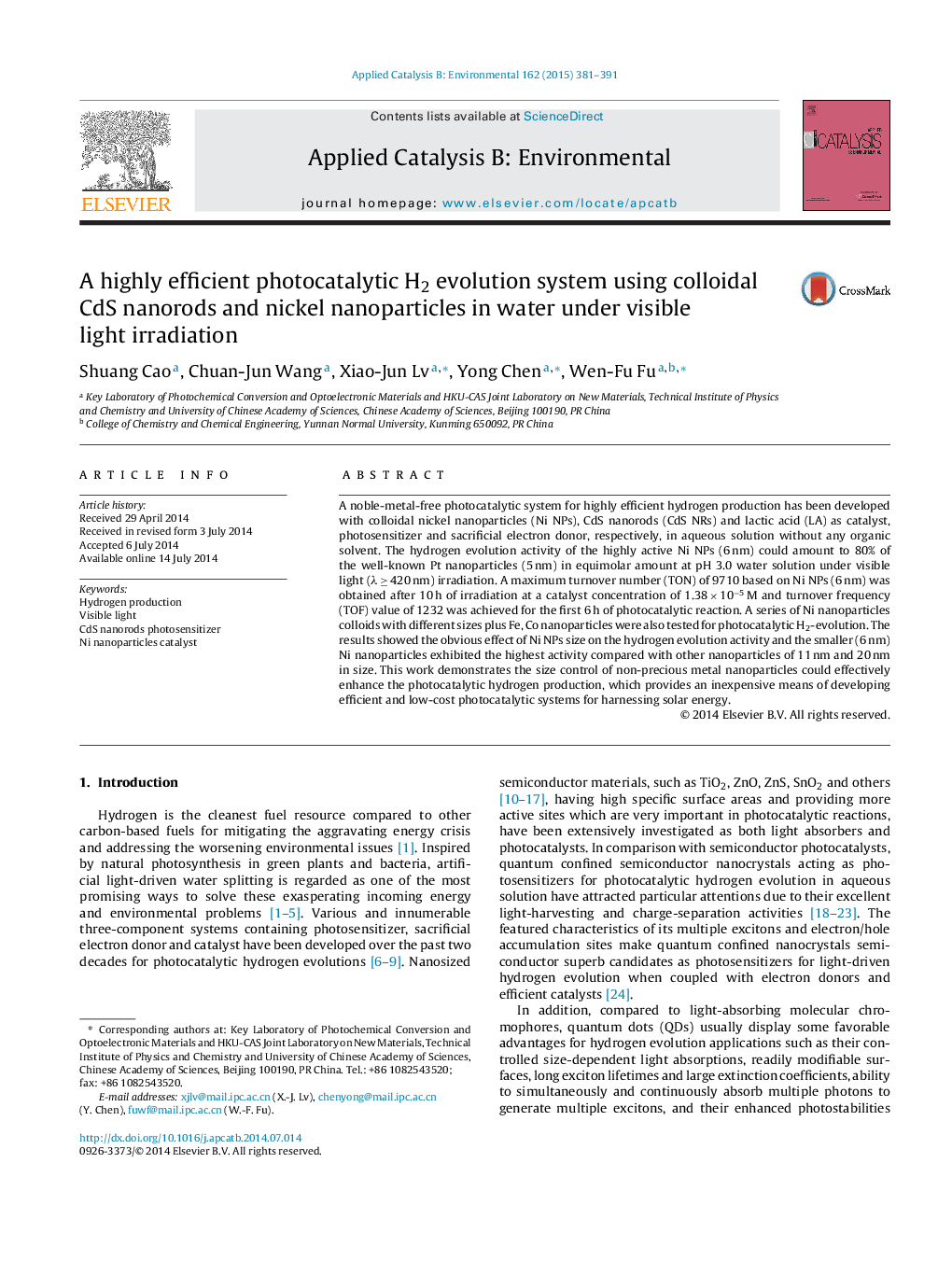| Article ID | Journal | Published Year | Pages | File Type |
|---|---|---|---|---|
| 45659 | Applied Catalysis B: Environmental | 2015 | 11 Pages |
•A noble-metal-free photocatalytic system for highly efficient hydrogen production was developed.•Nickel nanoparticles, CdS nanorods and lactic acid were catalyst, photosensitizer and sacrificial electron donor, respectively.•The system displayed highly efficient visible light (λ ≥ 420 nm) induced activity for hydrogen evolution.•The highest efficiency of Ni NPs could reach up to 80% of Pt nanoparticles under the same experimental conditions.
A noble-metal-free photocatalytic system for highly efficient hydrogen production has been developed with colloidal nickel nanoparticles (Ni NPs), CdS nanorods (CdS NRs) and lactic acid (LA) as catalyst, photosensitizer and sacrificial electron donor, respectively, in aqueous solution without any organic solvent. The hydrogen evolution activity of the highly active Ni NPs (6 nm) could amount to 80% of the well-known Pt nanoparticles (5 nm) in equimolar amount at pH 3.0 water solution under visible light (λ ≥ 420 nm) irradiation. A maximum turnover number (TON) of 9710 based on Ni NPs (6 nm) was obtained after 10 h of irradiation at a catalyst concentration of 1.38 × 10−5 M and turnover frequency (TOF) value of 1232 was achieved for the first 6 h of photocatalytic reaction. A series of Ni nanoparticles colloids with different sizes plus Fe, Co nanoparticles were also tested for photocatalytic H2-evolution. The results showed the obvious effect of Ni NPs size on the hydrogen evolution activity and the smaller (6 nm) Ni nanoparticles exhibited the highest activity compared with other nanoparticles of 11 nm and 20 nm in size. This work demonstrates the size control of non-precious metal nanoparticles could effectively enhance the photocatalytic hydrogen production, which provides an inexpensive means of developing efficient and low-cost photocatalytic systems for harnessing solar energy.
Graphical abstractA highly efficient noble-metal-free photocatalytic system in aqueous solution was developed for hydrogen evolution by visible light (≥420 nm) irradiation using nanocrystal CdS nanorods photosensitizer coupled with size-controlled water-soluble Ni NPs catalyst and LA sacrificial electron donor. The highest efficiency with Ni NPs of 6 nm size could reach up to 80% of Pt nanoparticles (5 nm) under the same experimental conditions, which is of great value based on economic concerns that Pt is noble and far more expensive than Ni. The system demonstrated that Ni NPs had high H2 evolution efficiency with 9710 TON (relative to Ni NPs) after 10 h of illumination and a TOF of 1232 mol H2 per mole Ni NPs per hour in the first 6 h. This work demonstrates a viable strategy to achieve highly efficient hydrogen production with earth abundant inorganic catalysts in aqueous solution and provides some novel notions of efficiently harnessing solar energy for photocatalytic applications.Figure optionsDownload full-size imageDownload as PowerPoint slide
